#Agile development
Explore tagged Tumblr posts
Text
Oh. I think I know what this is: Rugby. They're playing rugby. …is this called a scrum, maybe?
51 notes
·
View notes
Text
I guess my complaint about agile is that I just got off a $26,000 phone call where I did nothing and we have another one every two weeks forever
#agile development#programming#scrum#hourly wage times people times hours#this meeting could have been an email
43 notes
·
View notes
Text
I just want to know who chose the word ‘scrum’ in agile development and why bc it is so stupid sounding and I find it hysterical. Imagine being the scrum master. How can you take that title seriously.
2 notes
·
View notes
Text
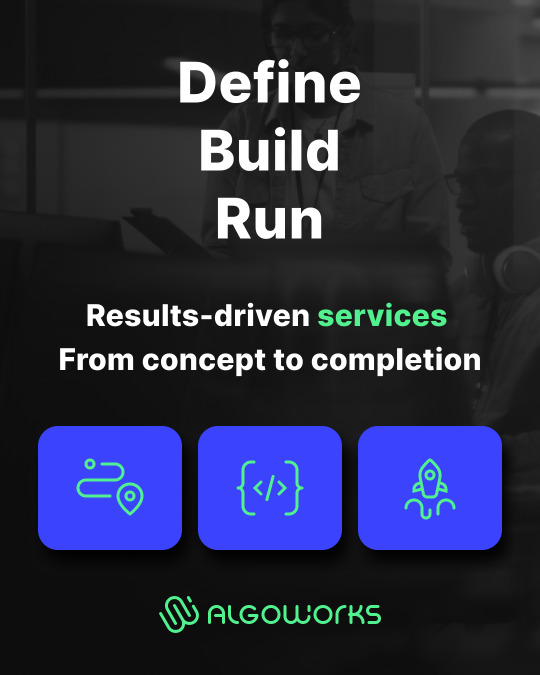
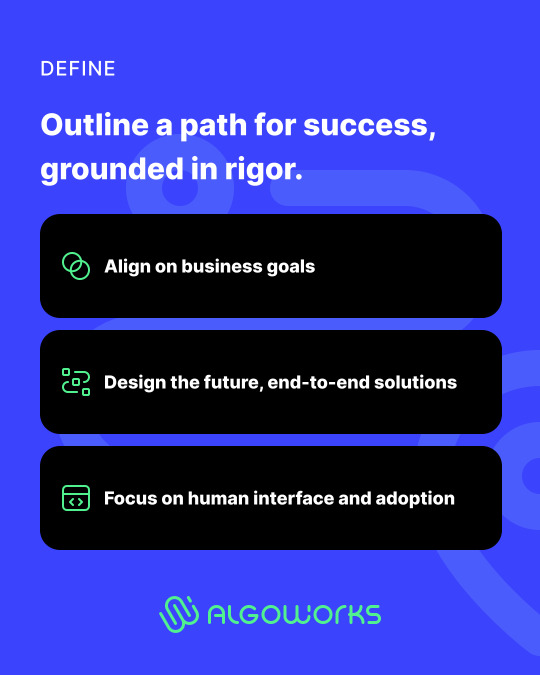

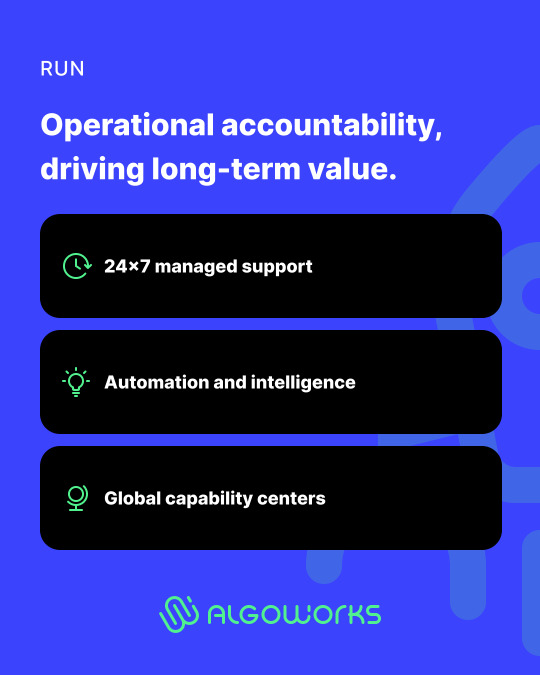
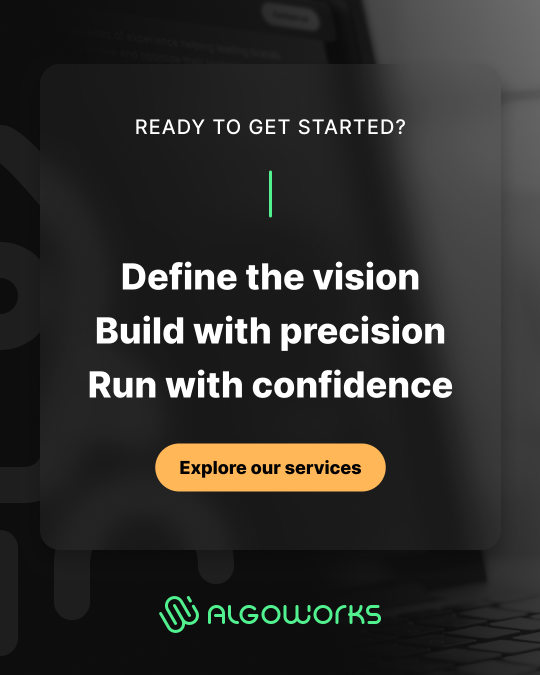
We follow our Define, Build, Run framework to execute flawlessly. From deep listening and 360° planning, to building with agile development and clean code, we ensure performance, security and return on investment through 24/7 monitoring and SLA-backed delivery.
Visit our website to learn more! https://www.algoworks.com/services/
#digital transformation#agile development#clean code#software engineering#cyber security#enterprise solutions#tech innovation#cloud services#innovations#technology#leadership#business excellence
2 notes
·
View notes
Text
Disruptive Business Strategies: Innovate, Compete, and Succeed
Disruptive business strategies are innovative approaches that challenge the status quo of the industry and introduce new products, services, or business models that change the way things are done. Here are a few examples of disruptive business strategies that have expanded businesses worldwide: Uber: Uber is a ride-sharing service that disrupted the traditional taxi industry. Instead of owning a…
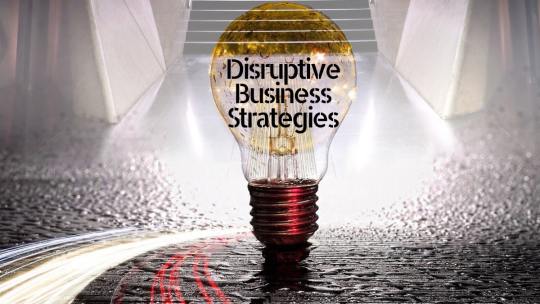
View On WordPress
#agile development#business competition#business leadership#business strategy#business success#business tips#competitive advantage#competitive edge#creative culture#emerging trends#grow business#industry norms#innovation#market disruption#market opportunity#marketing#technology#user experience
2 notes
·
View notes
Text
Corporate developers often use Agile methodology, so don't beat yourself up for not having a planning system as an amateur! It might be helpful to consider adopting one though if you're a fountain of ideas or find it difficult to prioritise moment to moment.
So as a really high level summary of Agile development, the development team decides what gets focus each week or so. Cycle time varies widely from organization to organization based on what works best for the team, but usually the goal is to keep them at around a week or so. The development team maps out some measurable tasks (there's a clear beginning and end so it's "deliverable"), and commits to that handful of tasks for that defined time period, taking into account how much time each task is expected to last and then padding that estimate to account for unknowns and not overload themselves. Other aspirations/tasks pop up? No problem! They're logged, then placed in a backlog list (unless they're urgent and literally cannot wait) then they get reviewed in the next planning session to see how they fit into the priorities of the next cycle.
Kanban boards are a common accompaniment to Agile development. You can build personal ones for free on sites like Trello or ClickUp (they both have mobile apps too in case you have thoughts while away from your computer). You can even keep multiple boards for different purposes or types of tasks. Many people use kanban boards for non-development projects. Writing, crafts, filing your taxes, whatever- it's very flexible.
There are a lot of courses on how to use kanban boards but basically it's for tracking statuses of assigned tasks. Common columns are "Open" (tasks selected for a cycle), "Blocked" (tasks that can't continue until an issue is resolved), "In Progress", and "Done" but it's highly customizable.
It doesn't have to feel authoritarian and corporate. Many successful dev teams prefer Agile for the sense of structure and the ability to track what they learn about the ups and downs of each project. It's not a tool to judge personal performance and some Agile systems (like Scrum) even have strict rules against assigning blame. It's ultimately about patience, both for yourself and your projects.
In the end, these are your projects and you're doing them for yourself. You call the shots and there is absolutely no problem with setting tasks aside when you find something too hard for now, you fall out of love with a project, or just need time away for whatever reason. If it sucks hit the bricks (log what happened, throw it back into the backlog or close it completely, pick something more fulfilling). It happens all the time in the professional world, and you should allow yourself the same amount of grace if not even more when you're acting as an entire dev team on your own as a hobby you do for fun.
I didn't really take a lot of time to draft this, but I hope this is readable and that someone finds value in this. I'm more than happy to answer questions too so feel free to reach out.
i fucking hate my brain it wants to do so many things and it cant even focus on one of them. like its like "start an rpgmaker game!" "no, you should learn godot!" "what about your 3d models on blender??" "but you have that comic to work on!!" "you should also just draw more things in general" and im like SHUT UUUUPPP it feels like this

#not poto#in fact this clashes dramatically with the general flow of this blog. oh well.#...Erik probably sort of did project management in his architect career? idk#what I've learned from STEM job#agile development#project management#kanban#scrum
17K notes
·
View notes
Text
Choosing the Right Software Prototype for Your Project
That brilliant idea for an app or software? It’s easy to get caught up in the excitement and want to jump straight into coding. But what if you could test drive your concept, catch problems early, and get real feedback before spending a fortune? That's the magic of Software Prototypes.
Think of it as a dressing function for your software. It’s about creating a working model to see how your idea feels and functions in the real world. According to a helpful guide by TeleGlobals, the trick is picking the right kind of rehearsal for your show. Let's break the options in easy terms:
The Quick Sketch (Throwaway Prototype): Imagine sketching your idea on a napkin to see if it makes sense. This is the digital version—a fast, low-cost model built to test a core concept. You'll gather crucial feedback and then, as the name implies, toss the prototype and build the real thing from scratch, only smarter.
The Growing Sapling (Evolutionary Prototype): This approach starts with a small, basic version of your product that actually works. Then, based on user input, you continuously water, prune, and grow it—adding features and refining it over time. This tiny sapling eventually blossoms into your final, polished software.
The Lego Set (Incremental Prototype): Building a massive, complex application? Forget to build all at once. This method is like building a giant Lego castle one section at a time. You create and test separate, self-contained pieces of the software and then click them together as you go. This is a key aspect of prototype software development.
The "Looks First" Model (Extreme Prototype): This one is all about the user experience, especially for websites and web apps. You build the front-end of the website—the part that users see and interact with at first glance. It looks and feels like a finished product, but the behind-the-scenes mechanics are simulated. Once the look and feel are perfect, a critical step in UI UX design software, you build the engine to make it all run.
Choosing your path isn't just a technical decision; it's a strategic one. By matching your project's needs with the right prototyping style, you're not just building software—you're building it right.
Read More:
#Software Prototyping#Prototype Development#Software Development#UI/UX Design#Throwaway Prototype#Evolutionary Prototype#Incremental Prototype#Extreme Prototype#App Development#Web Development#Product Management#Agile Development
0 notes
Text
Is DevOps and Agile the Same?- OpsNexa!
Explore the key differences and similarities between DevOps and Agile. Is DevOps and Agile the Same? While they are complementary, this guide will help you understand how each methodology addresses different aspects of the software development lifecycle and how they work together to accelerate development and deployment.
#DevOps vs Agile#Agile Methodology#Agile vs DevOps Differences#DevOps and Agile Comparison#Agile Development#DevOps Culture
0 notes
Text
SachhSoft – Build Better with Expert Developers

Partner with SachhSoft for scalable tech solutions, agile development, and intuitive digital products.
0 notes
Text
How to work with an Agile Offshore development team? In today’s globalized world, many companies are turning to offshore development teams to enhance their software development capabilities. Agile methodologies have become a popular choice for managing these teams, allowing for flexibility, collaboration, and rapid delivery of high-quality products. This article will explore how to effectively work with an agile offshore development team, providing insights, strategies, and best practices to ensure success.
0 notes
Text
Consistently labeling things wrong in jira is how I tell the scrum master his job and life are pointless
3 notes
·
View notes
Text
Building Future-Ready Solutions: How EDSPL Combines Agile Development and Rigorous Testing

In today’s fast-evolving digital ecosystem, companies no longer compete just on products—they compete on the experience, reliability, and adaptability of their solutions. Whether it’s software for internal operations or a customer-facing application, expectations are higher than ever. This is where EDSPL (Enrich Data Solutions Pvt. Ltd.) rises above the noise, setting new benchmarks in how businesses build and launch future-ready solutions.
At the heart of EDSPL’s philosophy lies a powerful blend of Agile Development and Rigorous Testing—a combination that doesn’t just deliver code, but delivers value, performance, and long-term reliability. This blog dives deep into how EDSPL uses this powerful mix to empower modern enterprises and why it matters now more than ever.
Why Future-Ready Solutions Matter
Before we delve into EDSPL’s approach, let’s first understand what it means to be “future-ready.” A future-ready solution is:
Scalable to handle growing user demands
Secure against emerging cyber threats
Adaptable to new technologies and market changes
User-centric, offering intuitive experiences across devices
Resilient, even under stress or unexpected disruptions
Most companies want this. But few know how to build it right.
This is where EDSPL stands out—not just by delivering working products, but by developing robust, forward-compatible, and well-tested solutions that help businesses not only survive but thrive.
The EDSPL Edge: Agile Meets Rigorous
At EDSPL, innovation is never accidental—it’s designed, developed, and tested to perfection. The company follows an advanced Agile Development Framework, intertwined with Rigorous Quality Assurance (QA) and Testing Practices, making the software lifecycle faster, more transparent, and highly adaptive.
Agile Development: Speed with Structure
Agile is not just a buzzword at EDSPL—it’s a mindset. Their agile process allows teams to build incrementally, respond quickly to change, and align closely with client expectations.
Here’s how EDSPL does it differently:
1. Sprint Planning That Listens First
Every sprint starts with deep collaboration—with clients, users, and internal stakeholders. EDSPL doesn’t just build what’s asked—they understand the “why” behind every request. This helps prioritize features that genuinely drive value.
2. Daily Stand-ups and Real-Time Updates
Daily team meetings ensure complete visibility and transparency. This keeps projects agile, flexible, and efficient—ensuring that teams stay in sync and issues are resolved early.
3. Incremental Delivery with Rapid Feedback
Instead of delivering a “final” product after months, EDSPL shares working versions early and often. This ensures that clients see progress, give feedback, and co-create their solution.
4. Continuous Integration & Deployment
Using CI/CD pipelines, EDSPL automates testing and deployment, ensuring that new code is merged seamlessly and safely. This keeps the development velocity high without compromising quality.
Rigorous Testing: Because Quality Is Non-Negotiable
Agile without testing is like speed without brakes. That’s why EDSPL integrates robust testing at every stage—not as an afterthought, but as an embedded principle.
Let’s look at EDSPL’s layered testing approach:
1. Unit Testing for Code Accuracy
Each module is tested by developers using unit tests, ensuring that individual functions behave as expected. This prevents bugs from snowballing into bigger issues later.
2. Integration Testing for System Harmony
Once units are ready, they are tested together to ensure smooth inter-component communication. This step is crucial when different APIs, databases, and services interact.
3. Automated Testing for Speed & Consistency
EDSPL uses automated tools to perform regression tests, smoke tests, and sanity checks—often as part of CI pipelines. This boosts testing speed while ensuring accuracy.
4. Cross-Platform and Cross-Browser Testing
Solutions are tested on varied devices, OS environments, and browsers to ensure consistency and accessibility for all end-users.
5. Security Testing by Certified Experts
With cyberattacks on the rise, EDSPL conducts penetration testing, vulnerability scans, and code reviews to ensure airtight network security. This is a game-changer for BFSI, healthcare, and enterprise apps.
6. Performance & Load Testing
No one likes a slow app. EDSPL simulates high-traffic scenarios to assess system behavior under stress, ensuring optimal speed, responsiveness, and uptime.
How This Approach Helps Clients Win
1. Faster Time-to-Market Without the Risk
Agile means speed, and rigorous testing means safety. Together, EDSPL enables businesses to launch early, test in-market, and improve continuously—without the fear of failure.
2. Adaptive to Changing Business Needs
Client needs evolve. Market demands shift. With EDSPL’s sprint-based and feedback-driven model, businesses can pivot quickly without starting over.
3. Seamless Integration with Legacy & New Systems
Whether the solution is being built from scratch or integrated with legacy ERP systems or cloud platforms like cloud security, EDSPL’s modular and well-tested approach ensures smooth interoperability.
4. Better User Experience (UX)
Well-tested applications mean fewer bugs, more uptime, and flawless user journeys—which directly impacts customer retention and brand reputation.
5. Future-Proofing via Scalable Architecture
EDSPL designs solutions that can grow with your business. Through microservices, containerization, and scalable APIs, businesses are ready for tomorrow’s demands today.
Case in Point: Real Outcomes from Real Projects
Enterprise CRM for a Logistics Giant
Challenge: High data load, legacy systems, frequent crashes EDSPL’s Solution: Agile reengineering + stress-tested architecture Result: 99.98% uptime, 4x faster lead-to-order time
Mobile Banking App for a Fintech Company
Challenge: Security, cross-platform compatibility, regulatory compliance EDSPL’s Solution: Secure coding + rigorous UAT + CI/CD deployment Result: Reduced vulnerabilities by 86%, launched in 40% less time
Custom ERP for a Manufacturing Firm
Challenge: Fragmented systems, poor UX EDSPL’s Solution: Incremental module delivery with usability testing Result: User satisfaction improved by 75%, internal training time reduced
Inside the Culture: Why EDSPL Delivers Differently
Client-Centric Communication
Clients are treated as collaborators, not just recipients. Every EDSPL team—developers, testers, analysts—are trained to speak in the client’s language, not just code.
Tech Talent That Understands Business
From Agile-certified PMs to ISTQB-qualified testers, EDSPL builds project teams that are technically sound and business-aware.
Continuous Learning & Innovation
Whether it’s AI-powered testing, DevSecOps, or automated code analysis, EDSPL invests in R&D to keep evolving.
Transparency That Builds Trust
From project dashboards to regular demo calls, clients are never left in the dark. The result? Projects stay on track and surprises stay out.
SEO Takeaways & Keywords Embedded
To support digital visibility, this blog naturally integrates key search terms for better search engine ranking:
Agile software development company in India
End-to-end software testing services
Scalable enterprise solutions
Future-ready application development
Application security with QA practices
Routing and Switching expertise
Mobility-ready enterprise apps
Cloud security and network security consulting
All-in-one digital services provider
Conclusion: The Future Is Built, Not Predicted
The world will keep changing—technologies, threats, and user expectations will evolve. But companies that invest in future-ready, tested, and adaptable solutions will lead that change.
At EDSPL, this belief is at the core of everything. By combining the agility of modern development with the assurance of rigorous testing, EDSPL helps businesses not only build software but also build a legacy.
If your enterprise is looking for reliability, speed, scalability, and security in one powerful package—EDSPL is not just a vendor, but your strategic technology partner.
Visit the website: https://www.edspl.net/ Ready to build what the future demands? Connect with the EDSPL team today and let’s shape tomorrow, together.a
0 notes
Text
Agile Development: A Smart Choice for Growing Startups
Startups thrive on speed and adaptability. An Agile Software Development Company offers the ideal framework to scale smartly. By emphasizing iterative progress and customer collaboration, Agile ensures that your MVPs are launched quickly and improved continuously. Stay lean and innovative with Agile software development.
0 notes
Text
Find New Opportunities with Agile Business Management Consulting in Canada

Business landscape of the 21st century, companies face numerous challenges, from the pressures of globalization to the fast-paced advancements in technology. In this environment, traditional business strategies often fall short, necessitating more dynamic, flexible, and responsive approaches. Enter Agile Business Management Consulting—a transformative strategy that has taken the Canadian business world by storm, offering firms a path to adapt swiftly and thrive in a volatile and uncertain landscape.
Understanding Agile Business Management Consulting
Agile Business Management Consulting is an approach borrowed from the software development world, where it revolutionized project management by emphasizing iterative progress, collaboration, and customer feedback. In the context of business management, agile methodologies enable companies to remain adaptable, responsive to market changes, and focused on customer satisfaction. By implementing agile practices, businesses can streamline operations, enhance efficiency, and ultimately drive sustainable growth.
The Rise of Agile Business Management Consulting in Canada
Canada, known for its diverse economy and innovative business environment, has become a fertile ground for the growth of agile methodologies. Companies across the nation are increasingly turning to Agile Business Management Consulting to gain a competitive edge. Business sectors such as healthcare, technology, and finance are particularly benefiting from this shift, leveraging agile strategies to improve service delivery, accelerate product development, and enhance customer experiences.
Dana PharMed Inc., a leader in agile strategy consulting, exemplifies the transformative power of these methodologies within Canada's business landscape. With more than 20 years of experience in strategy consulting across North America and emerging markets, Dana PharMed offers tailored solutions designed to meet the specific challenges of niche industries like MedTech, Life Sciences, and Digital Health. Their commitment to implementing actionable and innovative strategies helps clients move confidently towards achieving their business objectives.
Key Benefits of Agile Business Management Consulting
Enhanced Flexibility and Adaptability: Agile methodologies enable organizations to respond quickly to changing market dynamics and customer needs. This flexibility ensures that businesses remain competitive in fast-evolving industries.
Improved Customer Satisfaction: Agile consulting places a strong emphasis on customer feedback, allowing businesses to tailor their services and products to meet client expectations more effectively. This focus on customer satisfaction can lead to increased loyalty and positive word-of-mouth.
Streamlined Operations: Through constant iteration and feedback, agile methodologies help identify inefficiencies and waste within business processes. By optimizing operations, companies can reduce costs and improve productivity.
Accelerated Time-to-Market: Agile practices promote rapid development and deployment, enabling businesses to bring products and services to market faster. This speed is crucial in industries where first-mover advantage can dictate market share.
Increased Collaboration and Innovation: Agile consulting fosters a culture of collaboration across departments, encouraging the free flow of ideas and driving innovation. This collaborative environment is essential for businesses aiming to stay ahead of the competition.
Implementing Agile Business Management Consulting in Canada
Implementing agile strategies requires a comprehensive understanding of both the methodology and the unique challenges faced by the business. Dana PharMed Inc. approaches each consulting engagement with a focus on the specific needs of their clients. Their services encompass everything from data-driven business analytics to AI-powered marketing strategies, ensuring that every aspect of a company’s operations is optimized for success.

At the heart of Dana PharMed's approach is a commitment to extreme confidentiality and client satisfaction. Their team of dynamic, forward-thinking consultants works collaboratively with businesses to develop solutions that are not only innovative but also grounded in practical applicability. By leveraging the latest technologies and insights, Dana PharMed helps companies achieve long-term recognition, profitability, and competitive advantage.
Why Agile Business Management Consulting is Essential for Canadian Companies
In an era where change is the only constant, Canadian companies that embrace agile methodologies position themselves to navigate uncertainties with agility and confidence. The application of Agile Business Management Consulting allows organizations to not only survive but thrive amidst the complexities of today's business environment. With a strategic partner like Dana PharMed, businesses can unlock their full potential and drive sustainable growth through strategic agility.
Conclusion
As Canadian companies venture into unknown territories in search of growth and innovation, Agile Business Management Consulting emerges as a beacon for adapting to change. Organizations willing to embrace these methodologies will find themselves better equipped to handle the myriad challenges of the modern business world. By choosing partners like Dana PharMed Inc., they gain the insights and tools necessary to transform their operations and achieve unparalleled success in an ever-evolving market.
For companies in Canada seeking to thrive in this new age of business management, Agile Business Management Consulting in Canada is not just an option—it's an imperative. Embrace agility and watch your organization soar to new heights.
1 note
·
View note
Text
0 notes